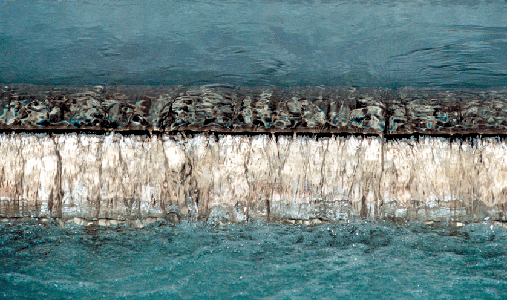How to eliminate nanoparticles from waste water?

Subterranean waters future of nanoparticles.
At water treatment plant, nanoparticles from weathering of some products may have an aggregation, a sedimentation or a radical transformation which may affect their concentration in the effluents, in the sludge's which will follow sectors such as incineration, the storage or spreading.
Chemical transformations such as the dissolution by oxidation (for example Ag0) or by dissolution (for example CeO2) are elements to take into account in the nanoform material balances [C.L. Doolette et al., Chemistry Central Journal 7 (2013) 2-18 / R. Ma et al., Environmental Science and Technology 46 (2012) 752-759 / L.E. Barton et al., Environmental Science and Technology 48 (2013) 7289-7296].
Several studies have shown that these chemical transformations are accompanied by precipitation in the form of mineral species (Ag2S, CePO4) [C. Levard et al. Environmental Science and Technology 45 (2011) 5260-5266 / C. Levard et al., Environmental Science and Technology 46 (2012) 6900-6914]. These species, thermodynamically stable, seem to be less toxic than the starting materials.
The surface functionalization seems to:
- slow down the chemical transformations,
- maintain the reduction or oxidation initial state ever longer by limiting contact with the bacterial aggregates.


